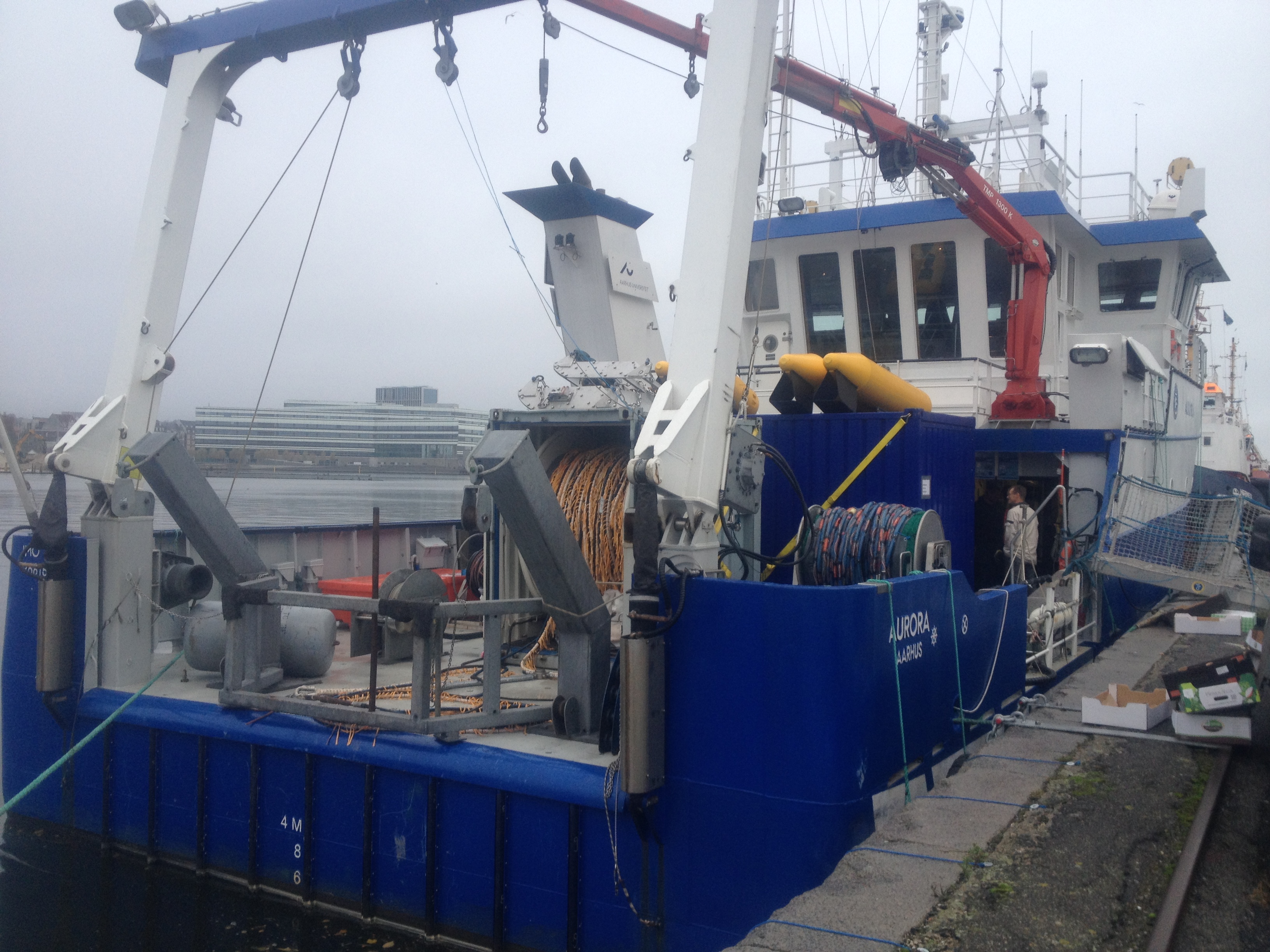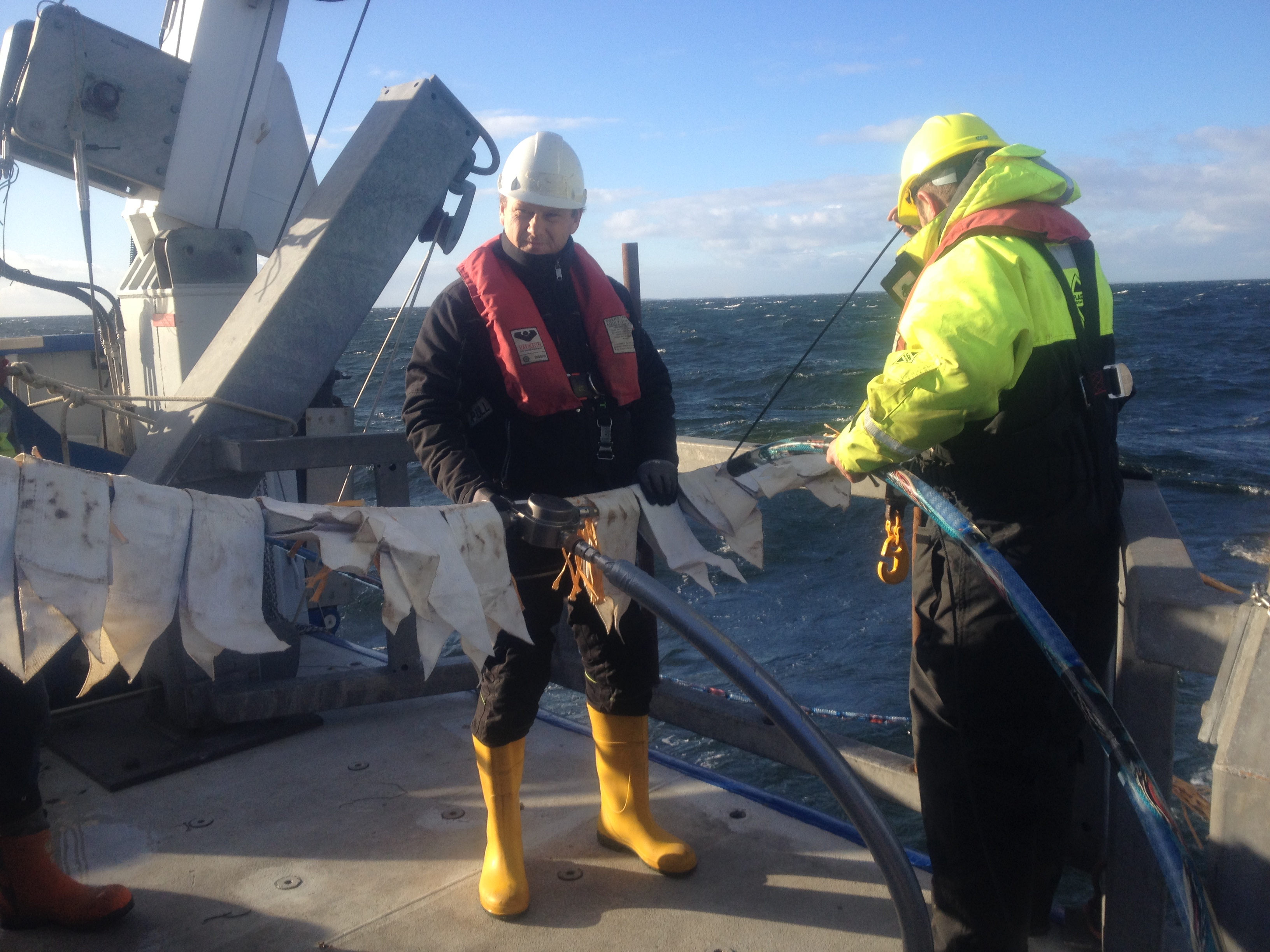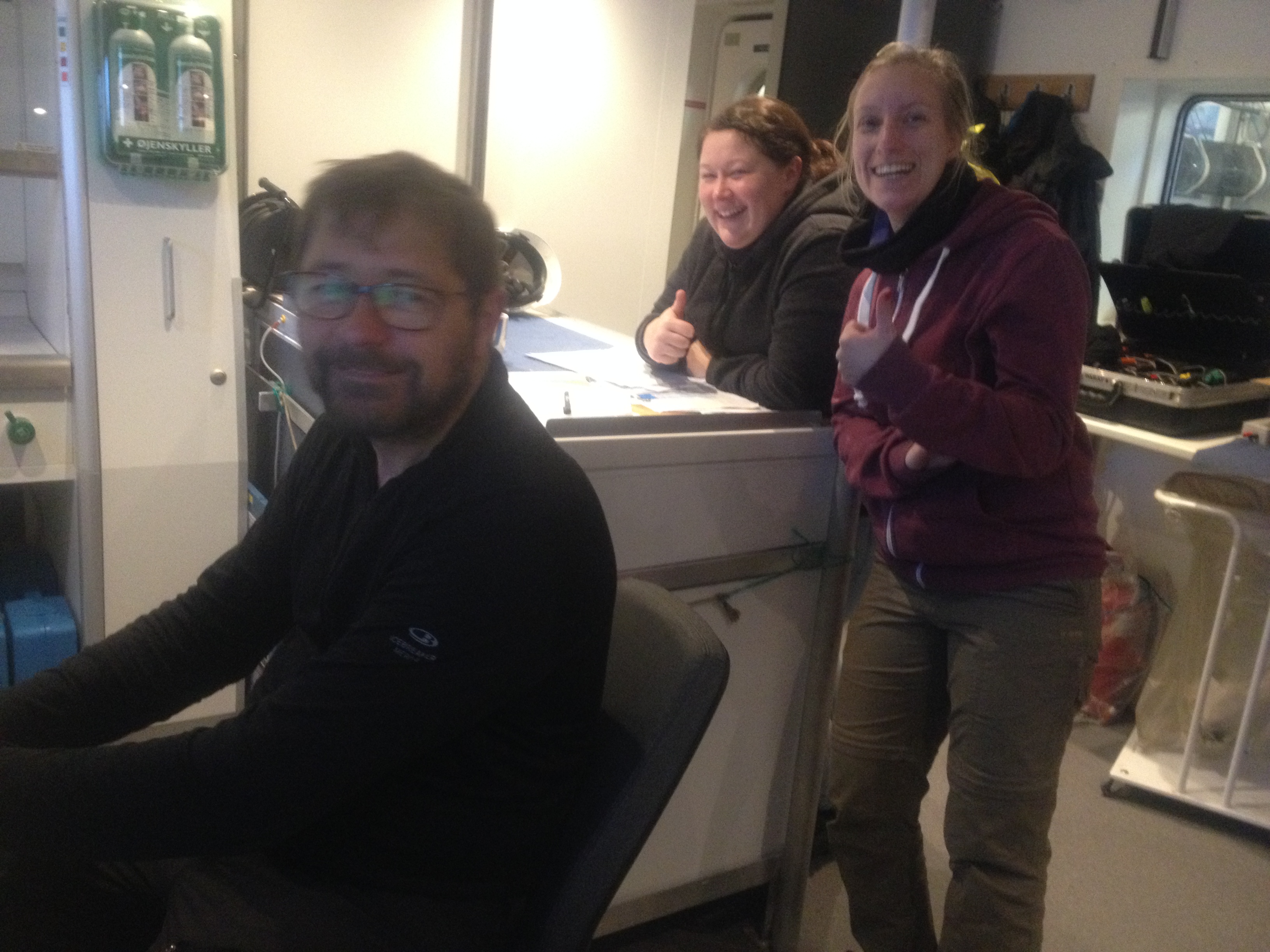The first successful 3D seismic cube acquired with the new P-cable system
Following a series of test cruises during the fall 2016, people from SeisLab Aarhus (including Per Trinhammer, Katrine Juul Andresen, Egon Nørmark and Lars Rasmussen) in cooperation with the crew onboard RV Aurora successfully completed the first high-resolution 3D seismic survey during the period 16-19 January using Department of Geoscience's newly developed P-cable system.




Data which were acquired southeast of the island Samsoe, cover an area of ??1.2 km x 7 km and are currently being processed. With the new high resolution 3D seismic data, we will for the first time have the opportunity to visualize and analyze minor faults, sediment packages and geological structures in the shallow subsurface in three dimensions which will help us further in our understanding of the evolution of the investigated sedimentary basins.
The Department’s P-cable system has been under development in the past 1.5 years and consists of a cross-cable with 8 short streamers. We use a centrally located airgun source and a sparker source. Ultra-high resolution subbottom profiler data (SES) are simultaneously acquired. Small adjustments are still being carried out on the system to improve the signal/noise ratio and to optimize the acquisition of the seismic data.
The P-Cable 3D seismic system will be used next time in May 2017 in relation to the research-project "Western Limfjord pockmark investigations, Visby Bredning 2017". The research cruise and expedition is led by Assistant Professor Katrine Juul Andresen and consists of two legs where 3D seismic data and gravity cores will be acquired in Visby Bredning, western Limfjord (collaboration with the Center for Geomicrobiologi, AU) and in Kattegat (collaboration with GEUS Marine Geology).
